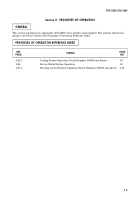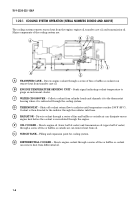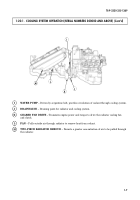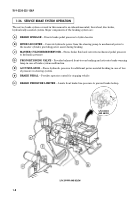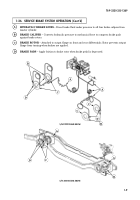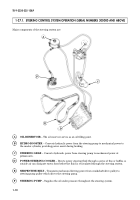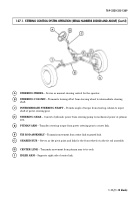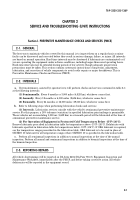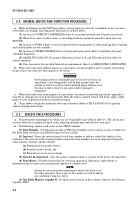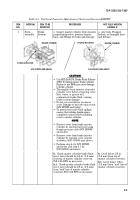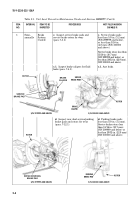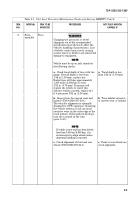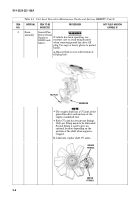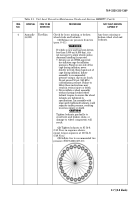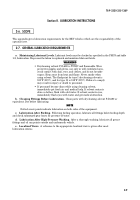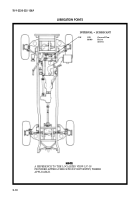TB-9-2320-335-13-P - Page 24 of 680
TB 9-2320-335-13&P
2-2
a.
While performing specific PMCS procedures, ensure items are correctly assembled, secure, not worn,
serviceable, not leaking, and adequately lubricated as defined below:
(1)
An item is CORRECTLY ASSEMBLED when it is in proper position and all parts are present.
(2)
When wires, nuts, washers, hoses, or attaching hardware cannot be moved by hand, they are
SECURE.
(3)
An item is WORN if there is too much play between joining parts or when marking data, warning,
and caution plates are not readable.
(4)
An item is UNSERVICEABLE if it is worn beyond repair and is likely to fail before the next
scheduled inspection.
(5)
LEAKS. TM 9-2320-387-10 contains definitions of class I, II, and III leaks and their effect on
vehicle operation.
(6)
If an item meets the specified lubrication requirements, then it is ADEQUATELY LUBRICATED.
b.
Where the instruction tighten appears in a procedure, you must tighten with a wrench to the given
torque value even when the item appears to be secure.
WARNING
Drycleaning solvent is flammable and will not be used near an
open flame. A fire extinguisher will be kept nearby when the
solvent is used. Use only in well-ventilated places. Failure to do
this may result in injury to personnel and/or damage to
equipment.
c.
Where the instruction clean appears in a procedure, you must use drycleaning solvent (appendix C,
item 26) to clean grease or oil from metal parts. After the item is cleaned, rinsed, and dried, apply a light
grade of oil to unprotected surfaces to prevent rusting.
d.
Clean rubber and plastic materials with soap and water. Refer to TM 9-2320-387-10 for general
vehicle cleaning instructions.
a.
The preventive maintenance for which you are responsible is provided in table 2-1. The checks and
services listed are arranged in logical order, requiring minimal time and effort on your part.
b.
The following columns read across on the PMCS schedule:
(1) Item Number.
Provides logical order of PMCS performance and is used as a source number for
DA Form 2404, on which your PMCS results will be recorded.
(2) Interval.
Shows the interval next to each item number to indicate when that check is to be
performed. The interval will be repeated when consecutive item numbers are to be inspected during the
same interval. Interval columns include:
(a)
Semiannual (six month) checks;
(b)
Annual (yearly) checks; and
(c)
Biennial (every two years) checks.
(3) Item To Be Inspected.
Lists the system, common name, or location of the item to be inspected.
(4) Procedures.
Provides instructions for servicing, inspection, lubrication, replacement, or
adjustment and, in some cases, having item repaired at a higher level.
NOTE
Always do your preventive maintenance checks and services in
the order prepared. Once it gets to be a habit, you will be able to
spot anything wrong in a hurry.
(5) Not Fully Mission Capable If.
If vehicle meets criteria in this column, vehicle is Not Mission
Capable (NMC).
2-5.
SPECIFIC PMCS PROCEDURES
2-4.
GENERAL SERVICE AND INSPECTION PROCEDURES
Back to Top


